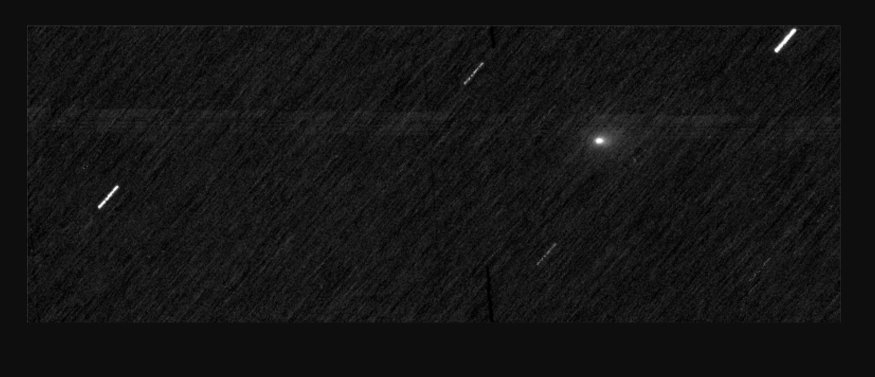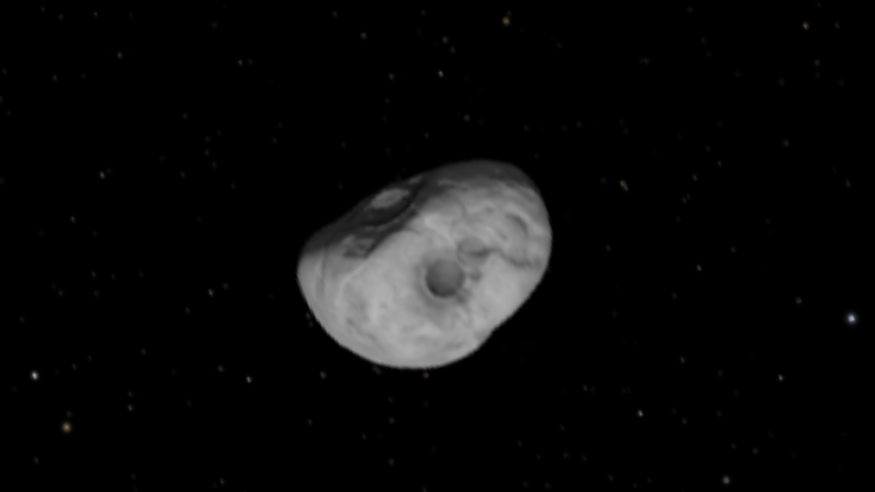
The interstellar object 3I/ATLAS, also known as C/2025 P1 (ATLAS), has now passed its perihelion, the closest point to the Sun at roughly 1.35 to 1.40 astronomical units (AU), or just over 200 million kilometres.
According to reports, during this period, the comet has become unobservable from Earth, hidden behind the Sun in a phase known as solar conjunction.
Despite its disappearance from terrestrial view, several spacecraft positioned near Mars were able to continue tracking it. Among them, the European Space Agency's ExoMars Trace Gas Orbiter (TGO) captured close-range data of the interstellar visitor, offering scientists a rare opportunity to study such an object from within the Solar System. Here's what it found.
ExoMars Captures Rare Close-Range Data
According to reports, ESA's ExoMars Trace Gas Orbiter was in a favourable position to observe 3I/ATLAS as it passed near Mars earlier this month, collecting high-resolution imaging and spectroscopic data. According to the preliminary mission reports, the observations are among the most detailed ever obtained for an interstellar object, providing new insights into its physical composition and volatile activity.

The NASA Neil Gehrels Swift Observatory also detected hydroxyl gas (OH) in the comet's coma — a by-product of water molecule dissociation, indicating that the object is releasing water vapour despite being unusually far from the Sun. This finding, scientists note, suggests a form of early or distant activation that differs from typical Solar System comets.
Unexpected Ratios Hint at Alien Formation Conditions
Meanwhile, spectral analyses of 3I/ATLAS continue to intrigue researchers. The ratio of carbon dioxide (CO₂) to water (H₂O) detected in its coma is significantly higher than expected for ordinary comets originating from the Kuiper Belt or Oort Cloud, according to multiple reports.
This discrepancy has led scientists to theorise that 3I/ATLAS may have formed in a much colder, more volatile-rich environment or that it has somehow retained pristine ices since its interstellar journey began.

According to experts, these ratios reveal a lot about the object's chemistry and suggest that it is not what we're accustomed to seeing.
Natural Phenomenon or Artificial Object?
While most experts classify 3I/ATLAS as an unusual but natural comet, some astrophysicists, including Professor Avi Loeb of Harvard University, continue to entertain the alternative hypothesis that the object could be artificial in origin.
Supporters of this hypothesis point to its hyperbolic trajectory, early activation, and reflective anomalies, which appear irregular compared to other known interstellar objects.

However, both ESA and NASA have emphasised that no data currently supports the artificial-object hypothesis, and that all observations to date remain consistent with natural cometary behaviour.
Awaiting the Next Observation Window
According to ESA's mission schedule, the next viewing opportunity will open in mid-November 2025, when 3I/ATLAS re-emerges from behind the Sun. Several observatories, including NASA's James Webb Space Telescope, Hubble Space Telescope, Mars Reconnaissance Orbiter, and ESA's Mars Express, are expected to participate in coordinated tracking campaigns.
Further analysis is also expected from NASA's Juno spacecraft, which will have a viewing opportunity in March 2026, when 3I/ATLAS passes within 59 million kilometres of Jupiter.
Meanwhile, astronomers describe 3I/ATLAS as a natural interstellar comet with exceptional properties, awaiting fresh data that may confirm whether it is a fragment of distant planetary formation or something entirely unprecedented.
Originally published on IBTimes UK
© Copyright IBTimes 2025. All rights reserved.





